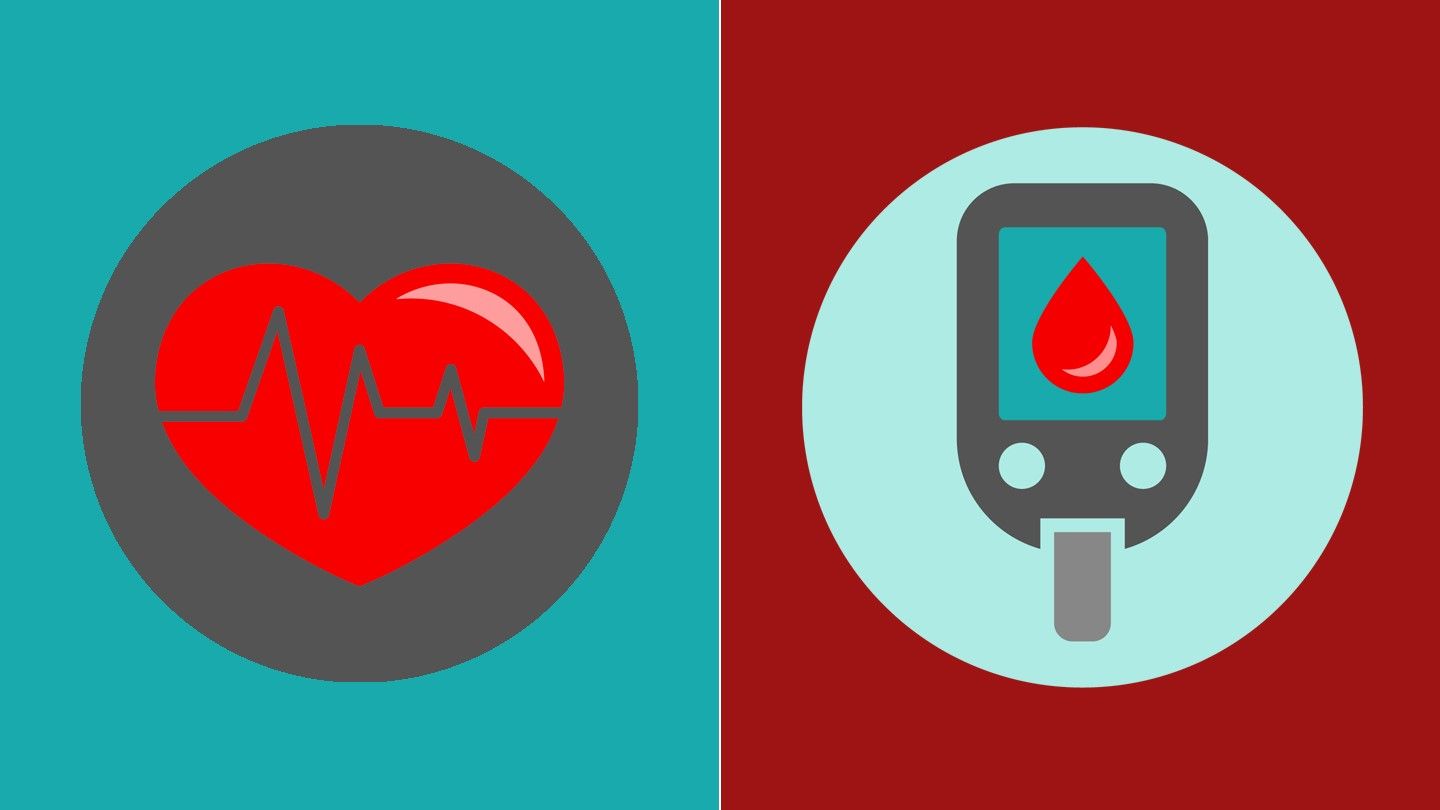Diabetes mellitus is a chronic condition in which blood glucose, or blood sugar, rises to a level that can affect the whole body. The diagnosis of diabetes is often made following routine tests where high blood sugar levels are seen. Diabetes mellitus is now a huge worldwide problem. Unfortunately, unbalanced lifestyles, a preference for sedentary activities and more have led to an increase in the number of people suffering from diabetes worldwide.
Can diabetes occur in children?
What are the types of diabetes in children?
Type 1 diabetes mellitus in children
Type 2 diabetes mellitus in children
Monogenic diabetes mellitus in children
Mitochondrial diabetes mellitus in children
Symptoms and treatment in children with type 1 diabetes
Symptoms and treatment in children with type 2 diabetes
How is diabetes diagnosed in children?
Can diabetes occur in children?
Yes, diabetes can occur in children and takes many forms, some more common than others. It is important to remember that diabetes in children can appear from the very first day of life.
What are the types of diabetes in children?
There are several types of diabetes in children:
- Neonatal diabetes
- Type 1 diabetes
- Type 2 diabetes
- MODY (Maturity-Onset Diabetes of the Young) diabetes
- Mitochondrial diabetes mellitus
- Neonatal diabetes mellitus
Often misdiagnosed as type 1 diabetes, neonatal diabetes occurs from the first day of life and often begins with ketoacidosis. Ketoacidosis is a serious condition that can be life-threatening for a newborn baby. Although the initial treatment for ketoacidosis in neonatal diabetes is insulin, the defect in this case is not related to a lack of insulin, but to the inability of beta cells to function normally.
In neonatal diabetes, the beta cells have a normal number, but for various reasons do not produce insulin. Most of the time, even if the start of treatment involves insulin therapy, normal blood glucose levels can be maintained later with the help of specific medication designed to help the pancreatic cells start producing insulin.
Type 1 diabetes mellitus in children
Although type 1 diabetes in children is often confused with neonatal diabetes, it is very important to make a clear distinction between the two. Firstly, type 1 diabetes starts after the age of 6 months and any onset earlier than 6 months should be considered as a diagnosis of neonatal diabetes. Secondly, type 1 diabetes is an autoimmune disease that can start in any child over 6 months of age and involves the disappearance of insulin-producing cells.
What is an autoimmune disease? Autoimmune diseases can attack any organ and involve the production of specialized cells, called autoantibodies, whose only role is to destroy the target organ. In type 1 diabetes mellitus, the target of the autoantibodies are pancreatic beta cells. Pancreatic beta cells are those cells that produce insulin.
It is worth mentioning that, although type 1 diabetes can occur at any age of the child, it is more commonly seen between 4 and 6 years of age, and between 10 and 14 years of age.
The onset of type 1 diabetes in children is often abrupt and sudden, characterized by severe insulin-penia (a drop in insulin). Young children end up in hospitals most commonly mimicking acute appendicitis. Severe abdominal pain, which can easily be mistaken for any digestive disorder, should always raise the suspicion of diabetic ketoacidosis.
Blood glucose dosing is paramount when symptoms are misleading and can misguide diagnosis.
Type 2 diabetes mellitus in children
Type 2 diabetes mellitus in children was very rare, if at all, 20, maybe even 30 years ago, but unbalanced lifestyles and a preference for sedentary activities have led to the emergence of this type of diabetes in children.
Unlike type 1 diabetes, which involves the destruction of insulin-producing cells, in type 2 diabetes insulin resistance plays a very important role.
What is insulin resistance? Insulin resistance is the inability of the cell to recognize and accept the function of insulin. One of the most important roles insulin plays in the body is to facilitate the introduction of glucose into the cell. In type 2 diabetes, insulin, although present even in very large amounts, fails to lower blood glucose.
It cannot be denied that both the sedentary lifestyle of today’s children and the diet based on fast food, as well as the increase in obesity as a consequence of the first two, are the main causes of type 2 diabetes in children.
This type of diabetes in children occurs more frequently in adolescence, between 15 and 19 years of age.
Monogenic diabetes mellitus in children
Monogenic diabetes mellitus comes in many forms and types, starting with type 1 monogenic diabetes and progressing to type 5 monogenic diabetes.
Depending on the type of monogenic diabetes, hyperglycaemia can occur from various causes, but never from autoimmune damage.
In type 1 monogenic diabetes the gene that regulates pancreatic function is affected, in type 2 monogenic diabetes the glycaemic sensor is affected. Damage to this glycaemic sensor leads to elevated blood glucose levels, especially in the untreated population. In type 3 monogenic diabetes the defect is at the renal level, and in type 4 monogenic diabetes pancreatic agenesis or failure of the pancreas to develop in intrauterine life may occur. Type 5 monogenic diabetes is often associated with the presence of renal cysts and is called RCAD syndrome.
Monogenic diabetes mellitus is rare and is often underdiagnosed in medical practice. Depending on the type of monogenic diabetes, patients may live their whole lives without knowing they have the condition or may require oral antidiabetic treatment and insulin therapy.
Depending on the type of monogenic diabetes, it can start as early as infancy.
Mitochondrial diabetes mellitus in children
Mitochondrial diabetes mellitus is also classified as a rare disease and can often be misdiagnosed.
It is good to know that in this type of diabetes, as in monogenic diabetes mellitus, the resetting of the glycaemic sensor leads to elevated blood glucose, especially in the morning.
What is specific to this type of diabetes, however, is its maternal transmission and association with bilateral deafness.
Mitochondrial diabetes mellitus can occur in childhood but generally does not go beyond the age of 40.
What should worry you?
Pancreatic disease takes many forms in children, but it is important to distinguish between rare and more common diseases.
This is why it is best to refer to the symptoms present in the most common types of diabetes in children, namely:
- Type 1 diabetes mellitus
- Type 2 diabetes mellitus
Symptoms and treatment in children with type 1 diabetes
Most of the time this type of diabetes occurs for the first time in the family. Most children with type 1 diabetes come from families where the disease is not common.
The typology of children with type 1 diabetes is particular, most of the time these children are normal weight, even underweight and have normal, even frequent, physical activity. Children with type 1 diabetes are not sedentary and have never had a history of weight gain.
Symptomatology often mimics acute abdominal damage and involves intense pain. Parents present to the hospital with the diagnosis of appendicitis in mind, but blood glucose testing will make the correct diagnosis.
Lack of insulin production leads to diabetic ketoacidosis, an acute condition that immediately endangers the child’s life, which is why it is mandatory to go to the hospital.
Observe your child and measure both blood glucose and HbA1c (average blood glucose for the last 2 – 3 months) especially if you notice that your child:
- Sudden weight loss with no obvious cause
- Frequent urination
- Asks for more water than usual
- Is more tired
- Has muscle cramps
- Frequently complains of headaches
- Has an increased appetite for sweets, but not only
Although the symptoms preceding the onset can be easily overlooked, it is best not to ignore them and to see your doctor as soon as possible.
Treatment for type 1 diabetes is with insulin alone and involves several injections a day.
Symptoms and treatment in children with type 2 diabetes
Unlike the child with type 1 diabetes, the child with type 2 diabetes is often overweight or even obese. The onset of symptoms is sinuous and rarely do young children end up in hospital in this case.
In this situation, it is also good to test blood glucose and HbA1c if your child has diabetes:
- shows exaggerated thirst
- urinates frequently
- Is more tired
- He/she has a headache
- Has an exaggerated appetite for sweets and more
Treatment of type 2 diabetes in children is mainly related to diet, only in severe cases and depending on the degree of pancreatic dysfunction, oral antidiabetic medication may be used.
How is diabetes diagnosed in children?
The diagnosis of diabetes is never made clinically, but always paraclinically following blood tests.
The blood tests that diagnose diabetes are:
- Blood glucose on different days above 126 mg/dl
- Glycated haemoglobin (HbA1c) over 6.5%
- Blood glucose at any time of the day over 200 mg/dl
I recommend that you see your doctor as soon as the symptoms described above and the changed tests raise your suspicions.
Diabetes mellitus in children can be immediately life-threatening and should not be ignored.


